Tuesday update at first light – Snow accumulation is not significant, and while this will provide insulation for low growing plants and tender growth of perennials as nights become colder over the next few days, little or no action is required to protect garden plants from the weight of the wet snow. Minimal accumulation of snow is found on tightly branched evergreens, and even long stemmed nandinas and Sky Pencil hollies require no action this morning.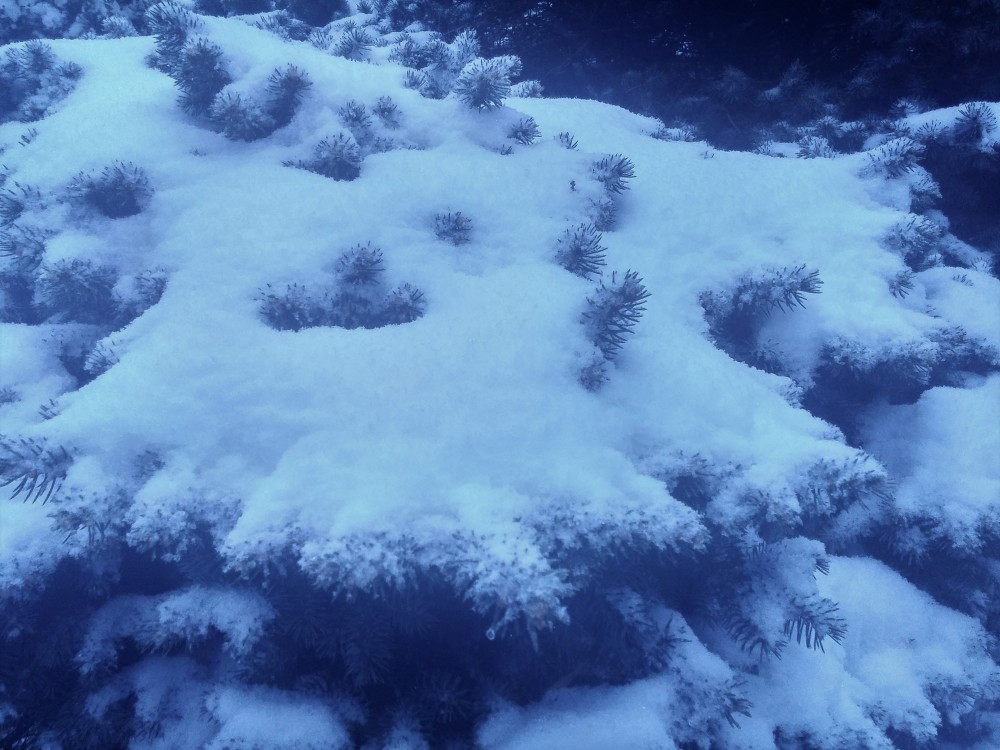 Cold on recent nights has already damaged flowers of magnolias and camellias (below). With temperatures possibly dropping into the mid teens in the next few days, the concern is that other flowers and emerging new growth will be injured. Recent nighttime lows have dropped to sixteen degrees in this garden, so I don’t anticipate more damage than has already been done. Daffodils and hyacinths should not have a problem, but it is likely that flowers of cherries and fruit trees will be damaged. While blankets or tarps might provide slight protection to smaller plants (possibly hydrangeas, if emerging leaves have not been damaged already), there is no practical protection for large shrubs and trees.
Cold on recent nights has already damaged flowers of magnolias and camellias (below). With temperatures possibly dropping into the mid teens in the next few days, the concern is that other flowers and emerging new growth will be injured. Recent nighttime lows have dropped to sixteen degrees in this garden, so I don’t anticipate more damage than has already been done. Daffodils and hyacinths should not have a problem, but it is likely that flowers of cherries and fruit trees will be damaged. While blankets or tarps might provide slight protection to smaller plants (possibly hydrangeas, if emerging leaves have not been damaged already), there is no practical protection for large shrubs and trees.  (
(
Note – The following post is copied with minor revisions from March 2013 and January 2016. Both occasions followed significant snow storms of a foot or more, but many of the same principles apply to Monday night and Tuesday’s storm that is expected to drop up to a foot of wet snow.
Let’s start with, yes, many of us agreed that it was inevitable we’d get some nasty weather in March as retribution for our mild winter. Probably, Mother Nature doesn’t work that way, but in any case, here it is, and at this point it matters not that this is not too far out of the ordinary.
A critical difference with this year’s forecast is that recent weeks of warmth have spurred growth on many plants, and temperatures this week are projected to drop below twenty degrees. Snow is an excellent insulator, so it will provide welcome protection to emerging foliage of ground cover plants, as well as daylilies, hostas, and other perennials that might be damaged by this week’s freeze.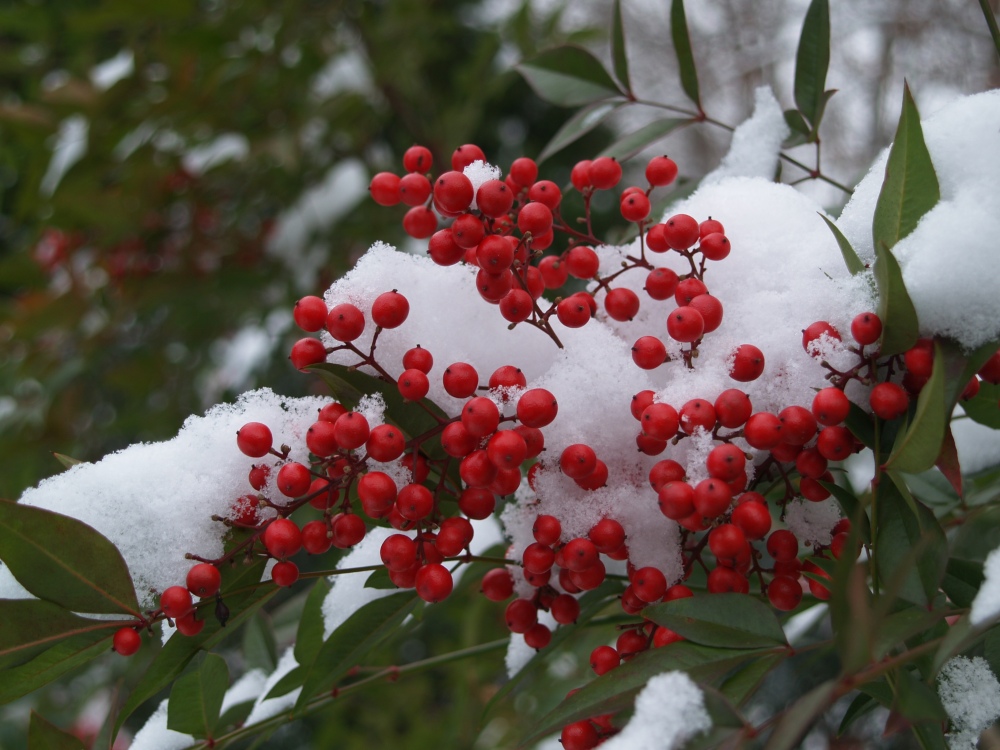
For most evergreens, from tall nandinas to lower growing boxwoods, the best practice is to gently shake loose snow so that branches are not bent. It is likely that a significant snow will not melt for several days in the cold that is forecast for this week, and branches that remain bent for more than a day or two might not return to their original position.
Multi stem evergreens such as Emerald Green arborvitae and Sky Pencil holly are most vulnerable to snow damage, so it is important to remove snow as quickly as possible. Or, prevent damage by tying twine or string around all stems to prevent them from being pulled apart.
The emphasis of this article is to exercise caution when removing snow rather than bashing and breaking branches. Even wet snow can be shaken loose with a gentle nudge from a broom or leaf rake. The less violent the action, the less damage will be done.
As always, we will be available for specific questions through this blog throughout the storm.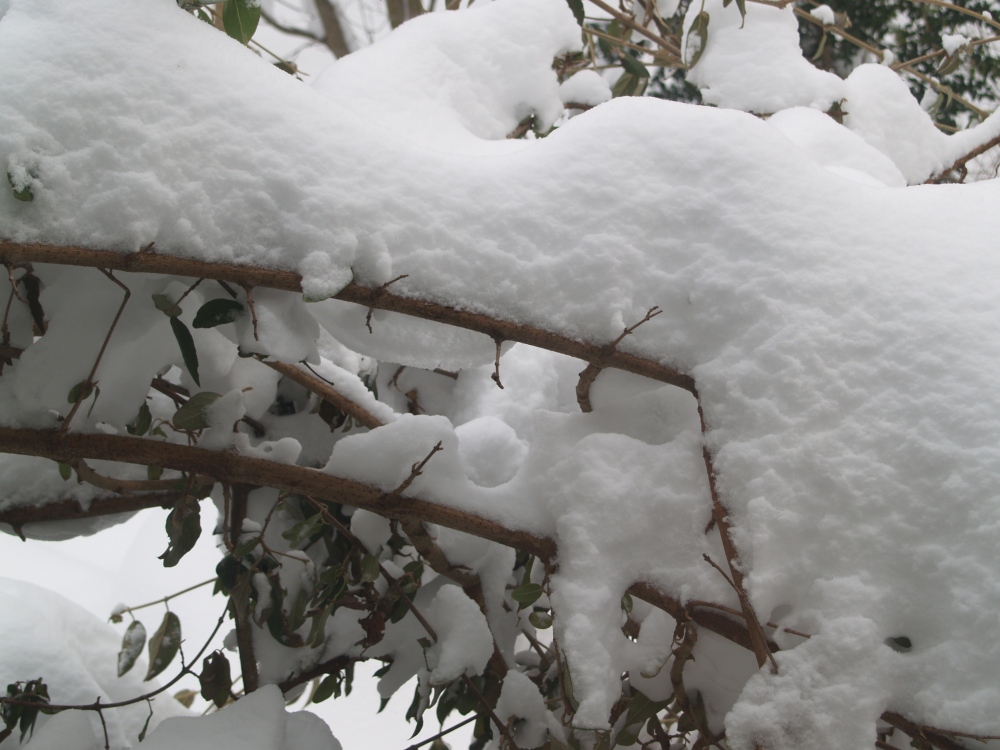
From March 2013 – Long before daylight this morning several inches of snow had fallen, and the worst of the storm is still to come. When I first went outside in the dark I was alerted to the problems ahead. Limbs of the wide spreading ‘Seriyu’ Japanese maple planted just off the corner of the garage were weighed down by snow accumulating in the dense branches to block half of the opening of the garage. As I looked across the garden the reflected light off the blanket of snow showed trouble in every direction.
Boxwoods and nandinas have been flattened by the heavy, wet snow, and crapemyrtle trunks fifteen feet tall are arched to nearly touch the ground. Unfortunately, I’ve seen this before. Now, with only four or five inches of snow there are problems. What will happen with another six, or eight, or ten inches still to come?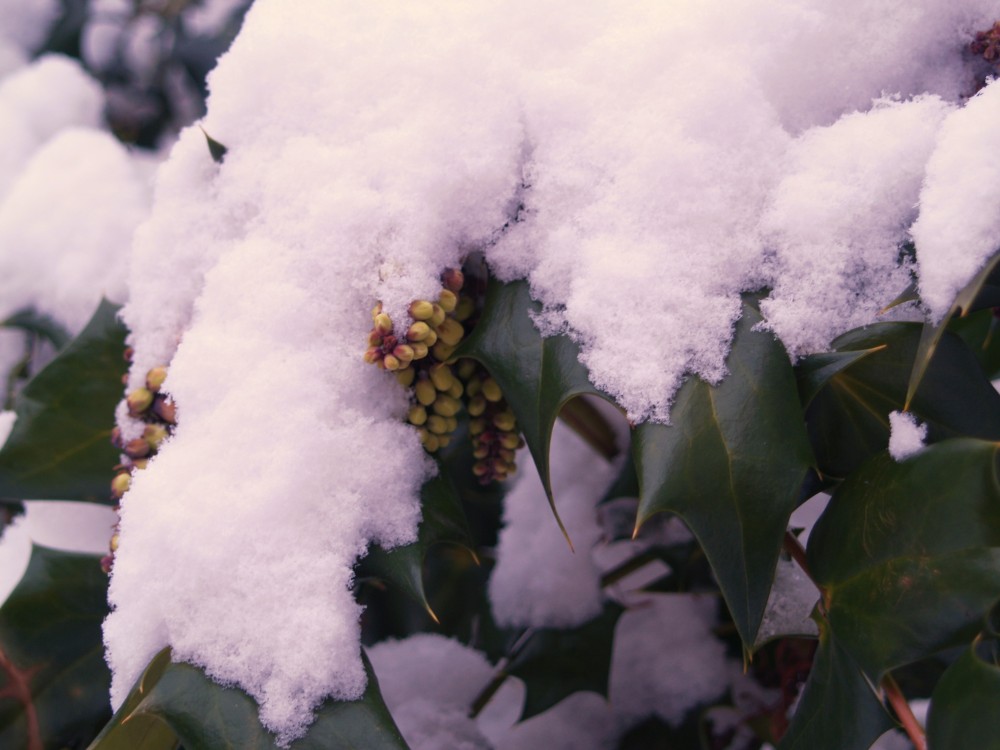
With colder temperatures and light, fluffy snow there is usually nothing to worry about. The wind blows, and the snow slowly drifts to the ground. But, wet snows accumulate quickly in evergreens and densely branched plants. Once the branches are bent the real danger is that they will break, and in winter storms several years ago my garden suffered substantially due to too little action, too late. Also, branches of trees and shrubs that remain bent will often lose their rigidity if allowed to remain too long, so that when the snow is gone the branches do not spring back. Many times these will require severe pruning or other actions to repair the damage.
Here’s how I plan to spend my day (after finishing this brief update).
Before the heavier snow causes more damage I’ll go outside, armed with a leaf rake. The process is not complicated from here. A gentle nudge with the rake is all that’s needed to dislodge most of the accumulated snow. Greater force can cause more damage, and most often it isn’t necessary. If winds pick up later in the day that might help to clear additional snow, but if the heavy snow that weighs the branches is allowed to remain the breezes could cause greater injury.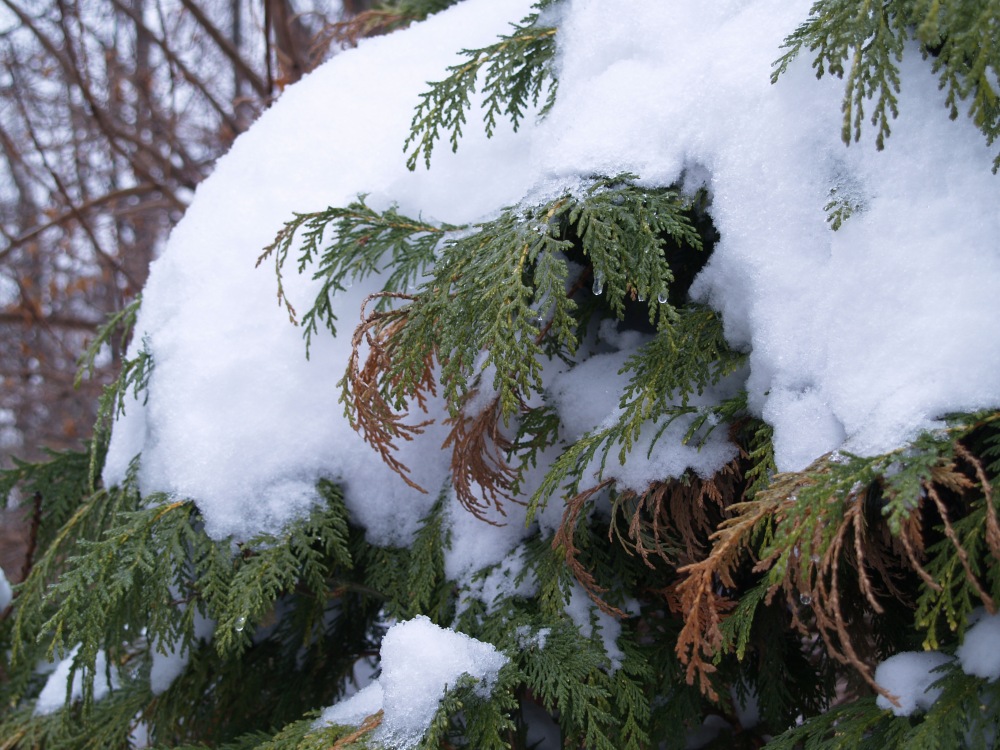
I’ll work on deciduous trees like the Japanese maples and crapemyrtles first, since these are most easily damaged. Japanese maples, in particular, are soft wooded with branching that is readily damaged by snow. Weeping varieties of Japanese maples are most vulnerable with a thick canopy of branches that collect the heavy snow. Extra care should be used in clearing the snow from these maples to avoid injury.
Once the branches are nudged with the rake the snow falls to the ground, and the branch usually springs back, though not all the way. This is rarely a concern when the branches have been bent for only a few hours, and I’ll worry about that another day since there’s little that can be done today. It’s not necessary to remove every bit of snow from branches, though the snow that remains will catch more of the wet snow that is predicted for later in the morning. My first snow clearing trip around the garden will probably be one of several today.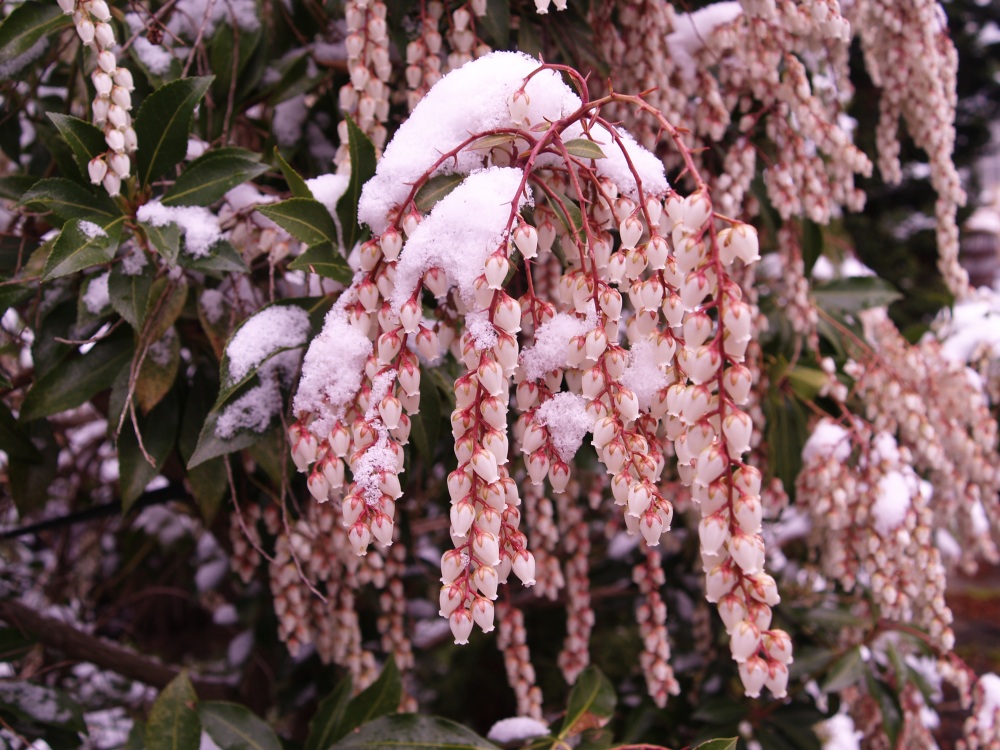
After the deciduous trees I’ll work on evergreens next, and follow that with smaller evergreen shrubs like the boxwoods and nandinas that have more flexible branches and often spring back quickly. Several years ago evergreen Southern magnolias and Leyland cypresses were severely damaged in consecutive winters. A tall cypress in my garden was bent to a severe angle, which eventually required removal. The Southern magnolias have grown back remarkably, but now their form is much more wide spreading since the broken trunks resulted in more horizontal growth. I’m afraid that this will only encourage more snow to accumulate in the branches, so these will be the first evergreens to be checked.
I have a large garden, with dozens of Japanese maples and small trees scattered over an acre and a quarter, so this task will require constant vigilance today. What happens if I ignore the snow, and see what happens? I’ve done that before, and in prior years when substantial snow falls overnight the damage is already done before I wake up.
Most often I have a casual attitude about garden chores. If I don’t pull weeds, they’ll still be there tomorrow (though they might have dropped a few thousand seeds in the meanwhile). Many garden chores can be put off, but a delay in removing snow from branches can cause irreparable damage to plants. So, I’m wrapping up my writing, grabbing my leaf rake, and heading outside. Also, while I’ve been writing it’s become light enough to see that the pace of snowfall has increased. The breeze has picked up and large clumps of snow are falling out of the tall tulip poplars and maples that border the garden.
The process of removing snow from trees and shrubs should not be vigorous exercise, and certainly is nothing compared to the labor of shoveling the driveway and walk. But, take care not to over exert, and if you are working in an area with tall trees be aware that branches could come down at any time. Avoiding damage to the plants in the garden is a much lesser concern than your personal safety, so be careful.
What about hydrangeas that had already begun leafing out prior to this cold spell and anticipated snow? Is there anything that can be done to protect them so that they will bloom on old wood this year?
I have already seen damage to leaf tips of hydrangeas. If emerging leaves are still green it could be worthwhile to cover the shrub with an old blanket or tarp for a few nights. This will provide a few degrees protection, but if temperatures drop into the mid teens the leaves are likely to be damaged. It is unclear whether this will kill stem tips and flower buds as the April freeze did a year ago, when hydrangeas were much further into leafing than they are now.
so i shouldn’t cover the emerging day lilies with even a sheet? just leave them open to the snow?
Foliage of daylilies is already tall enough in this garden that deer are beginning to nibble on it. The emerging leaves have been through several nights below twenty degrees, and I suspect that even without snow cover there wouldn’t be a problem. Even if the snow is only a few inches deep, that will be better insulation than a sheet or blanket.
Silly question, but what about daffodils that are fully in bloom? Should I just cut them and put them in a vase, lol? Would they survive if I leave them be?
The cold should not be a problem for daffodils, and snow is not a problem as long as it melts quickly. Although it will be cold for several days, there should be little chance that it will linger for a week.
Is there anything I can do to protect my fruiting plums from losing all their flowers and buds when the temp drops into the teens?
I’m afraid nothing can be done to protect from cold. This is a perennial issue for fruit growers.
Can emerging hyacinths withstand the snow? Is there something I can do to protect them? Thank you.
Cold should not be a problem for hyacinths.
What about emerging peony sprouts?
Since many perennials are popping up earlier than we’ve seen in the past there’s not much information to rely on. Early Tuesday morning it appears that the snow will be very wet, but only several inches deep. This could be enough to insulate new growth when the cold hits, but some additional protection could be helpful. Already I’ve seen damage to new growth of toad lilies, but I know that these will grow back through the brown leaves. I suspect peonies will not be as forgiving, but I’m not seeing growth on mine.
Dave, thank you for the useful information for my new Virginia garden. It has been a challenge these past 2 years but reading your posts has helped me to adjust to the difference between gardening in a micro climate walled garden in Asheville, NC , and here on a lake in central Virginia. I did go out yesterday before the snow started and cut all my daffodils even the ones that were budding, and overnight in the warm house they opened. On a warm day last week I dug out the heavy mulch from over my emerging Peony buds without reading the projected weather for this week! I have not had the nerve to go out this morning to see what is happening to them! I really need to heed your advice with more diligence, but I am so inpatient for spring and the beauty of my peonies! The English gardener.
I try not to be too worried about what might happen, but to observe and learn from the results. Usually, less goes wrong than expected, and probably your peonies will come out of this without a problem.